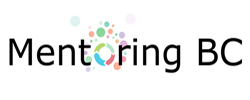Examples of different mentoring models in British Columbia
- School-based model (e.g., SD #42 Maple Ridge)
District schools each identify a ‘mentoring rep’ who volunteers to connect with any beginning teachers or teachers seeking mentorship due to changing positions. The rep is the contact person providing connection between school and district and helps to match mentee with a school mentor if the rep does not provide mentoring support him/herself. The district reps form a mentoring district team that is supported through a ‘retreat’, facilitated by a full-time mentoring co-ordinator for the district. Mentor teachers are carefully paired with new teachers and, throughout the year, use formal mentorship opportunities (release time) along with informal time to develop a mentoring relationship.
- District-based model (e.g., SD #73 Kamloops, SD #20 Kootenay Columbia)
A District Mentorship Steering Committee is established with representation from administration, union, principals, and teachers. The Steering Committee establishes the purposes, principles, and practices of the mentorship program. Teachers are informed about the mentorship program and apply to the committee to participate as mentors and mentees. Mentees can suggest their choice for potential mentors on the application. The Steering Committee then matches mentors with mentees across the district (within and across schools) according to similar contexts of teaching grades and subject areas.
- Learning team model (e.g., SD #43 Coquitlam, SD #37 Delta)
At the beginning of the year, teachers sign up to join a mentoring learning team in their area of teaching focus, each team led by teacher leaders/mentors (usually 2–3). For example, there are separate teams for teachers-teaching-on-call, kindergarten, primary, intermediate, resource teachers, middle school and secondary school. Each team meets several times a year, with planning and facilitation provided by the lead mentors. The learning team approach provides the opportunity for mentees to establish a one-to-one relationship with any of the team mentors for collaboration and observation, and also provides opportunity for indirect support by the entire team of professionals within the team. Learning support is additionally provided for mentors.
- Cohort model (e.g., SD #38 Richmond)
Cohorts of teachers who share similar areas of teaching and learning focus and interest are established. For example, five distinct mentoring groups grew in Richmond, focused on secondary, resource/ESL, intermediate, primary, and TTOC interests. These five mentorship cohorts are organized across the district and each cohort includes the following components:
- whole group mentoring sessions planned and facilitated by teacher mentors/consultants in order to professionally discuss challenging areas of daily teaching practice
- teacher mentors/mentee teams sessions (organized in secondary predominantly around subject areas)
- one-to-one teacher mentor/mentee opportunities for focused observations and reflective conversation regarding classroom practice
- teacher mentor training workshops to develop capacity and build mentorship and leadership skills for mentors.
This model allows for variable structures of mentoring to be developed to meet the needs of different cohorts, and has been successful in providing more curriculum-relevant mentoring for secondary teachers.
- Peer collaboration model (e.g., SD #50 Haida Gwaii, SD #84 Vancouver Island West)
This model of mentorship has evolved in more rural districts where there is a smaller teaching population working in more geographically isolated communities. Teachers form a collaborative partnership or team so they can learn from one another’s varied experience and expertise. Release days are provided for the partners or teams to work together, and they meet together as a whole group on professional development days to design a shared learning focus and receive training to improve collaboration skills. The collaborative partners and teams provide personal accountability for growth in a specific area of teaching practice, and create the conditions for their cultural knowledge and understanding to benefit each other. Peers who are geographically distanced from each other are assisted through the use of technology, establishing a virtual hub through which teachers can connect, and discuss their work (e.g., Vancouver Island West).
